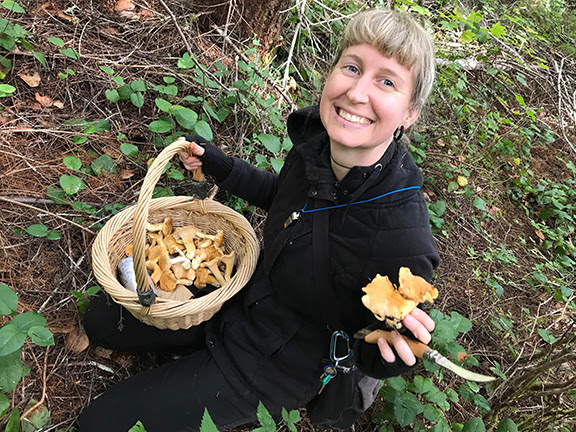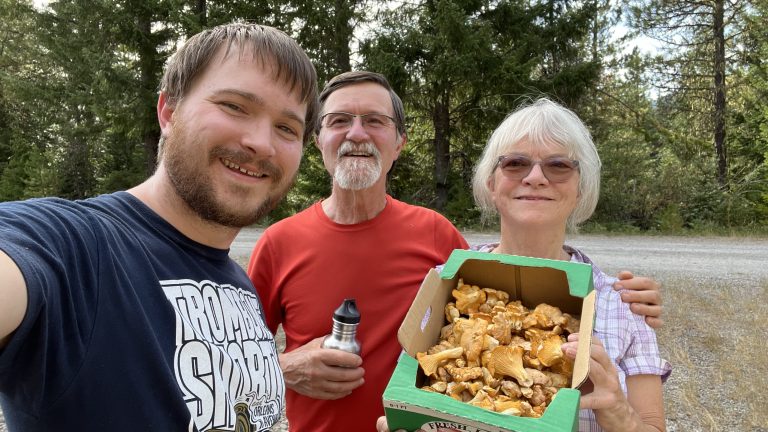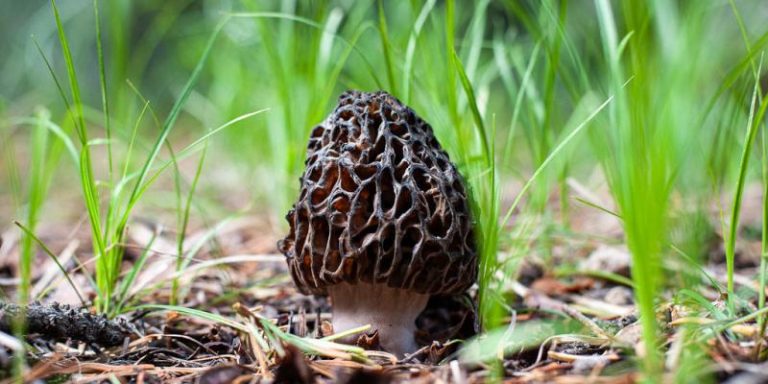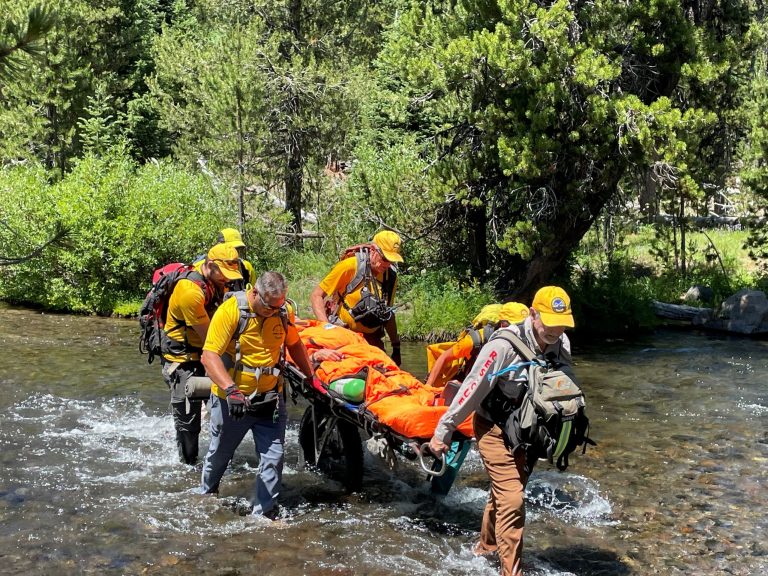How to Hunt Mushrooms
Learning to hunt mushrooms has some common threads for most of us. It begins with inspiration. Whether dinner with a friend who’s just served up a delicious meal of fresh mushrooms, a walk in the woods and discovering a bloom of fruiting mushrooms, or maybe an interesting outdoor article in the local newspaper. Any one of these can provide a catalyst to peak ones interest and curiosity to venture out into the woods. Even for the most adventurous sometimes what is obvious to the trained eye is not for one not familiar on what to look for and under what conditions to improve your probability of finding the prize!
Two items that help folks new to hunting mushrooms that are very high on the list are 1. Join your local mushroom club and 2. Pick up a reliable mushroom book, maybe two! Usually one larger reference book for home use and one for your pocket that travels with you works well. Under resources and links you will find a dependable list of books and guides to help you in your learning.
Seasons
Mushrooms have two dominate seasons, spring and fall however many extend for several months and some species have relatives that fruit in both seasons. However for our learning purposes we’ll say spring season usually runs from mid to late April thru June and fall from late August thru November. For Central Oregon early, weekly rains in the fall are always a sign for mushroom season start. We need to stay in those general time frames because locations from high mountain elevations, to mid valley, to coastal environments often vary widely.
Habitat and Companion plants
Hunting mushrooms offers a lifetime of clues in seeking out these beautiful fungi. Awareness starts with simple things like soil temperature, usually above 58 degrees. Get to know your soil types, sandy, rich humus, or substrate types. Substrates like wood, rotting wood, cut stumps, standing trees or wood chips. These are all little clues to finding and identifying fungi. Tree types are also a huge clue that is probably the most evident as it’s hard to miss looking at trees! When we use the term forest, we need to understand that forest speaks to a large area covered primarily with trees and undergrowth. So think broadly here, it can be a forest of hardwoods, evergreens or any variety of mixed untold combinations. Each species has its favorite companion plants where they grow and thrive.
Weather and Elevation
Before each season kicks off, anticipation and excitement builds as we can’t wait to get out there and hunt. In the spring it’s usually ground temperature and sun that stimulates fungi to emerge. In the fall it’s usually rain. As long as it’s not freezing, the fall season can extend well into November, especially in more temperate climates of valley or coastal locations. Impacts of drought, rain, freezing temps can all influence fungi. However may times if the weather permits you can still have follow-on-blooms of fruiting occur if sun, rain and warmer temps return. Always keep in mind elevation. Mountain environments give clues not only for tree species by varying elevations, but mushrooms follow similar patterns.
Gear
Equipment is not specialized. Many items at home are easily gathered to go hunting! You’ll need a basket or breathable bag, not plastic. Baskets with a handle are optimal as they allow the mushrooms to breath, and disperse the dirt or spores thru the wicker. Next a knife, pocket knife or one dedicated to living in your basket. A good strong butter knife or other utensil to pry up stubborn mushrooms is good to have. If fancy is your method you can pick up an Opinel #8, it’s about $30 from Amazon or REI. This French knife is folding, with a locking ring when extended and has a boar bristle brush at one end. It also has a convenient hole for a small cording. You can use braided 3-4mm cord, in florescent orange or green. Make it long enough to hang around your neck or throw a couple loops in it and stick it in your pocket. Leave the cord hanging outside and it’s easy to grab. The blade is curved and is excellent for trimming and cutting mushrooms, the brush for removing dirt before placing mushrooms in your basket. The florescent cording glows against the ground so you will never lose it when placed on the ground!
More must haves…Forest permits and map of forest, most Oregon forests require a permit to hunt mushrooms. These permits are free unless you are a commercial picker. Visit your local ranger station for your permit. You will also want a GPS unit or App on your phone, whistle, if in a group bring some walkie talkies. Don’t forget the usual safety items, matches, water, rain coat, hat, first aid, power bar, snacks. Always practice good protocol for venturing out, let someone know where you’re going and when you plan to be back. If in groups, set times and meeting places. Do not wonder off, always keep one another in view, and keep track of each other. Last but not least…ensure you have your handy pocket guide along, David Arora, All That the Rain Promises and More… is an excellent place to start.
Collecting Specimens
To help protect your mushrooms in your basket you can use wax paper sandwich bags (not plastic) to put like mushrooms together. Always clean your mushrooms in the field. If you place a dirty mushroom in your basket, you will find all your mushrooms dirty! Just be sure to not squash them, only use wax paper or brown paper bags to separate them. You will want to have a cardboard box handy if you have several stops to store your mushrooms until you get home.





